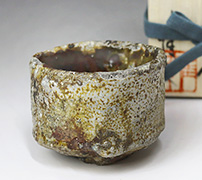Home > Tanbayaki
Tanbayaki has been produced in the village of Tachikui, Hyogo pref. for over 800 years. Although counted as one of the ancient six potteries in Japan with Seto, Tokoname, Shigaraki, Bizen and Echizen, Tanba has certain characteristics which set it apart from its peers. A comparison of pieces from the Momoyama period (Late 16th century) shows Tanbayaki to have a lighter, more refined feel, attributed in part to the fact that the natural glaze has a greenish tinge. These pieces, then fired in "Ana-gama" (cave kilns) are now refered to as "Old" Tanba. Various developments over time also contributed to Tanbayaki's uniqueness. Late in the Momoyama period a new method of firing was introduced, using a kiln built on a slope ("Nobori-gama"). In the early Edo period, the area produced a diverse array of pottery, ranging from pepper pots for the feudal lords to tea ceremony ware under the guidance of Enshu Kobori. During the latter part of the Edo period the local clay was refined and new techniques were introduced, resulting in the creation of finer, more sophisticated pieces. It was during this time that deep-red glazed ware known as "Akadobe-yu" and pieces made of white clay ("Shiro Tanba") came into being. Despite the high quality of its ware, Tanba was at this time still essentially a regional kiln, producing mainly for local use. The emergence of the Japan Arts and Crafts movement in the early 20th century enhanced the popularity of these rustically appealing pieces and helped Tanbayaki to achieve the nationwide recognition it enjoys today. The appeal of Tanbayaki lies in the beauty of its natural glaze which reflects the surroundings in which it is made, and the refinement of form, born through years of experience and experimentation. The use of various names to describe this simple, yet tasteful pottery may cause some confusion, being alternatively referred to as Tanba or Tanba-Tachikui yaki.(The English spelling can also be rendered as Tamba). To counter this, there has been a recent trend to label all pieces produced in the area under the blanket term "TANBAYAKI".
| (Click the Picture for enlargement and details.) | |||
 |
|||
Guinomi Sake cup |
|||
|
|
|
|
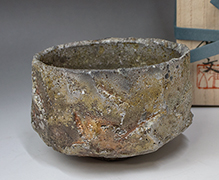 Tea bowl / Onishi Masafumi US$150.00 SOLD |
 Tea bowl / Onishi Masafumi US$135.00 SOLD |
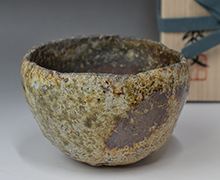 Tea bowl / Onishi Masafumi US$150.00 SOLD |
|
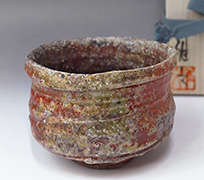 Matcha Tea bowl / Onishi Masafumi US$480.00 SOLD |
 Katakuchi /Onishi Masafumi US$140.00 SOLD |
||
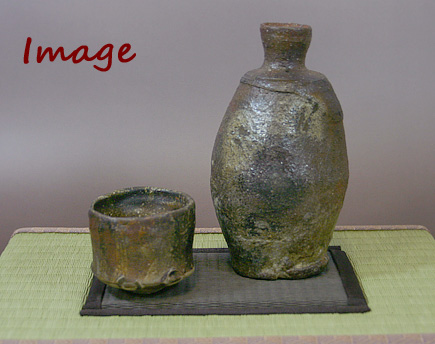 |
|||
| Given the rustic texture and the many shade variations on the pieces, it is difficult to give an exact representation of the actual colors. Shades may appear lighter or darker according to the light and the computer format used. If you would like more information on the color of your chosen piece, do not hesitate to contact us and we will try to post more photos taken in different lights and from different angles. | |||




